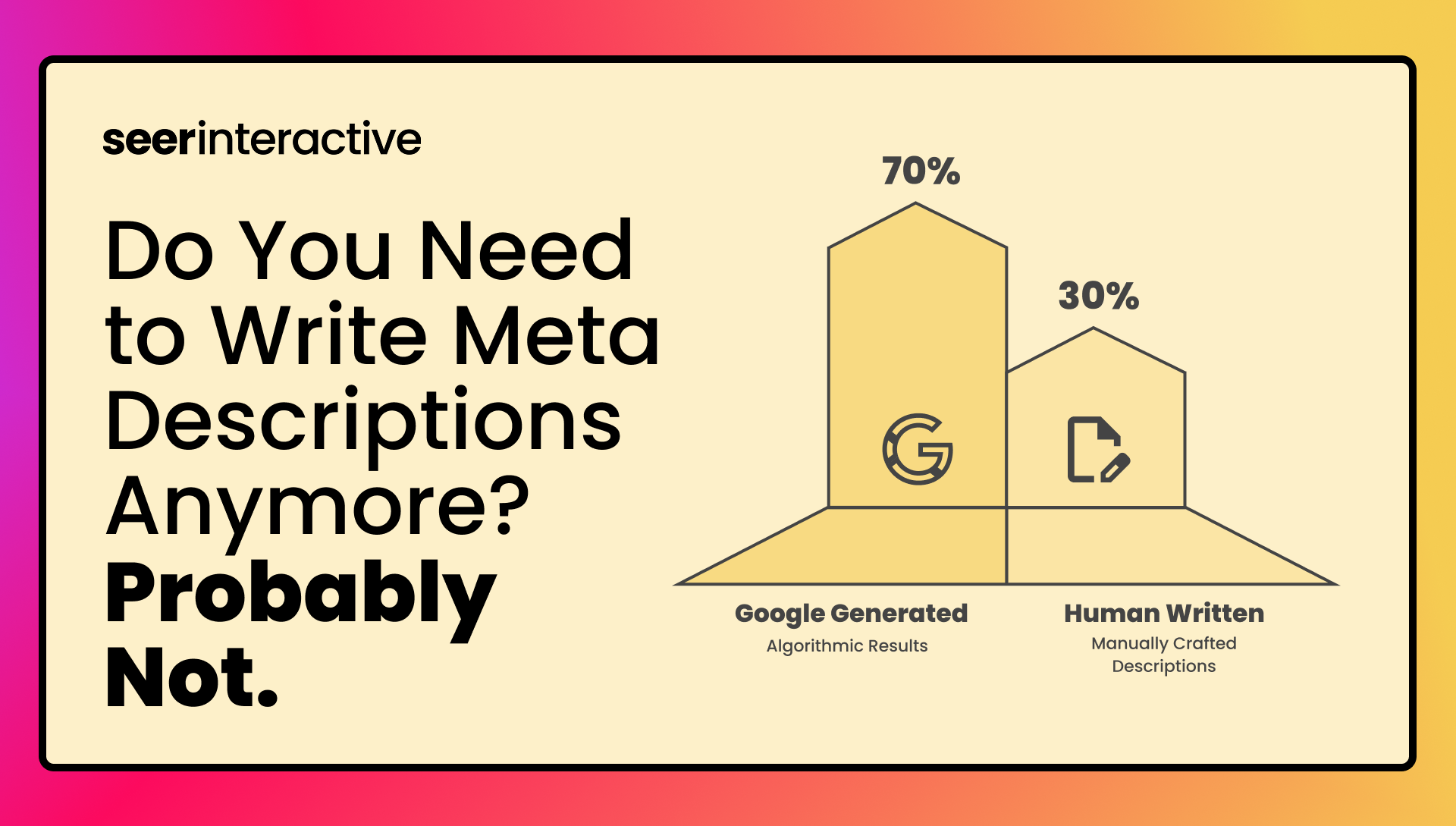Oh, featured snippets. Position 0 for the majority of its existence has long mystified marketers, as it is seemingly reserved by Google for the fortunate few. However, as more featured snippets are appearing in Search Engine Results Pages (SERPs), we as marketers have the opportunity to obtain these highly coveted positions.
In this post, you’ll learn why featured snippets are important to your site’s visibility, why formatting is crucial for gaining ownership and how you can identify and target featured snippet opportunities.
- What is a Featured Snippet?
- Benefits of Featured Snippets
- Common Types of Featured Snippets
- How to Identify Featured Snippet Opportunities
- How to Rank for Google Featured Snippets
What is a Featured Snippet?
Featured snippets are a Google search feature in which your listing or position is featured at the top of organic results before a link to the page, unlike the standard format. Ultimately, featured snippets aim to answer the searcher’s question faster directly within the search results, eliminating the need to click through to a website.
[TIP] Searchers like featured snippets as they provide quick answers to their questions, benefiting the chosen site by addressing their audience's needs.
Featured Snippets and Voice Search
Featured snippets are vital for voice search on Google as they often become the direct answers provided by voice assistants. Designed for conciseness and relevance, these snippets are ideal for answering voice search queries that require quick and straightforward responses. Optimizing for featured snippets, therefore, not only boosts your content's visibility in traditional searches but also in the expanding voice search arena, positioning your site as the go-to source for information.
Benefits of Featured Snippets
Owning featured snippets can be beneficial to your site for a few reasons. They allow you to:
- Provide the right answers for your audience and gain free brand exposure: Google is serving more SERP features like featured snippets and a great deal of SERPs are changing to Zero-Click landscapes. Keep your brand top of mind by capturing those SERP features. Users may not be clicking to your site, but you're still answering their pain points when they need you.
- Control the conversation around your brand: For branded searches, owning the narrative around your brand so that others can't is a huge opportunity. For example, a university might not want to talk about their graduation rate, but that allows a third party site to rank for the featured snippet and provide users with an inaccurate number.
- Increase website authority: E-E-A-T, or Experience, Expertise, Authority, and Trustworthiness, has been a hot topic in recent years, reflecting Google's focus during certain algorithm updates. Google isn’t going to give a featured snippet to a website without a good level of E-E-A-T.
Featured Snippets and Zero Click Searches
If you’re wondering if you can expect organic traffic and click-through rates to increase after owning a featured snippet, well, it depends.
While owning a featured snippet can lead more users to your site with your content at the front and center on Google, it can also paradoxically reduce the number of direct clicks to the site as a result of “zero click searches.” Zero click searches occur when users find the information they need directly on the search results page, eliminating the need to click through to a website. According to a Semrush study, 25.6% of Desktop searches are zero click.
You may be saying, “Okay, Seer, I still need to provide metrics to my leadership team and you’re saying I could risk LOSING traffic?” Yes, yes we are. To survive in today’s featured snippet game, you may need to ask yourself the following two questions:
- Am I okay with not gaining or potentially even losing traffic to my website if we obtain a featured snippet?
- If I’m not, what happens when my competitor gains that top spot over my site, what’s the risk of them gaining it over me?
Common Types of Featured Snippets
Featured snippets display various content formats within the SERPs, including paragraph, table, and list formats (in numbers and bullets). Additionally, these featured snippets can pull in images or videos. Our friends at GetStat.com studied over 92,000 featured snippet queries and found that:
“Paragraph snippets were most common, showing up in 82 percent of featured snippets. List snippets appeared in 10.8 percent, and table snippets in 7.3 percent. All three occasionally showed images, but the formats never overlapped one another.”
Check out the example featured snippet formats below.
Paragraph-Style Featured Snippets
Like the name implies, paragraph snippets contain up to a few sentences of text in paragraph format to provide simple, straightforward answers. Content that typically appears as a paragraph featured snippet addresses the following questions:
- What
- Who
- When
- Where
Keep in mind that paragraph formats are the most common type of featured snippet. If Google does not have the desired format (table or list) to pull from existing website content, it will revert to paragraph-style featured snippets.
Table-Style Featured Snippet
Table formats typically appear for more robust questions that need various pieces of organized information to fully address the answer, such as university acceptance rates.
Content that typically appears in this format addresses questions that can’t be answered directly, such as:
- Which
- Different use cases
- Best
- Types
List-Style Featured Snippet
List-style featured snippets appear for questions that require individual steps or a long list, such as “steps to apply to grad school.”
Types of questions that typically have a list-style featured snippet include:
- How
- Have
- Best (Tables & Lists)
Google may also display unordered list featured snippets, in which there is no specific order that the content has been written in, such as “college application essay ideas.” For this query, steps do not need to be completed in a sequence, and there is no hierarchical ranking.
How to Identify Featured Snippet Opportunities
So, you know that creating content that targets featured snippets on Google is an invaluable strategy for enhancing visibility for your site, but how do you go about finding opportunities to own those featured snippets? Easy. By leveraging keyword research tools and the SERPs themselves, you’ll be able to identify which queries result in that sought-after featured snippet.
Conduct Keyword Research
At the heart of identifying potential opportunities for featured snippets lies thorough keyword research. Tools like Semrush and Ahrefs can be leveraged during this process, offering insights into keywords that currently trigger featured snippets in search results.
When conducting keyword research in Semrush’s Keyword Magic Tool, navigate to “Advanced filters” and filter specifically to search terms that have featured snippets to easily identify featured snippet opportunities related to your topic of interest.
If you want to find ways to optimize existing content that you currently rank for, check out Ahrefs organic keyword report, where you can once again filter specifically to keywords that have a featured snippet in the SERPs.
Examine the Current Search Engine Results Page (SERP) Landscape
In addition to using keyword research tools, a direct examination of SERPs provides a wealth of information. The SERPs will not only highlight the content formats Google favors, but also show what other questions or information searchers are interested in.
By answering similar questions on your page, you can enhance your content's relevance and increase its chances of securing a coveted spot in featured snippets. This approach ensures your content is not only rich in quality and information but also aligned with the queries and formats that users and search engines value the most.
How to Rank for Google Featured Snippets
Now that you know the common types of featured snippets and how to find keywords to optimize for, you’re ready to start creating your content. Consider these steps when optimizing your content with the goal of gaining a featured snippet.
1. Review What is Currently Ranking
Analyzing the content that your search competitor has published to successfully get a featured snippet is a strategic move that can provide valuable insights into crafting your content. By examining their language, the length of the content within the featured snippet, and the specific information they are providing, you can gain a clearer understanding of what Google deems worthy of this prestigious position.
This analysis is not about exact imitation, but about inspiration; it offers a blueprint on the type of content being favored by search algorithms. Use this information as a guiding light for your content creation, tailoring your approach to not only meet but exceed the standards set by the current snippet holder.
2. Use Headings that Relate to the Question or Topic
You know what format you need to write your content in, now you need to make sure you have the right information to meet searchers’ needs. While a “what is” heading isn’t absolutely necessary to own a featured snippet, it can help improve Google’s understanding by using the question and answer format.
Keep in mind that Q&A format doesn’t work for every situation, particularly your “how-to” or “step-by-step” pages. In these cases, ensure you use relevant headings that provide clear instructions or guidance.
3. Answer User Questions Directly
The two most important ways to obtain featured snippets is by addressing the users’ queries first and foremost, and then optimizing the answer in a user preferred format.
Write your content with the target audience in mind, considering what exactly they would need to know to answer their query.
When optimizing for paragraph snippets in particular, try to provide an answer immediately and directly within the first 2 sentences of your content.
For example, for the search “what does it mean to be deferred from a school,” the winning page sees success by providing a to-the-point definition of a deferral.
Following your clear definition or answer, you should then provide more info, data, images, etc. to answer the question as fully and completely as possible.
4. Use the Right Format
Reviewing current rankings will also help you determine what format your content should be in to maximize your chances of getting a featured snippet.
Is the ranking competitor winning with a table? Implement an HTML table with the proper <table> mark-up to present your information.
Is the ranking competitor winning with a numbered list of steps? Consider replicating this strategy.
The format—whether bullet points, a paragraph, or any other structure—used by the competitor ranking at the top is a valuable indicator of what Google prioritizes for that specific query. Let this guide the structure and formatting of your content, as aligning with these preferences can be a decisive factor in achieving featured snippet status. This strategic adaptation not only caters to the search engine’s algorithm but also meets users' needs for information in the most accessible and useful format.
5. Include Images and Videos When Appropriate
Some featured snippets will display images or video along with a written answer, giving you the opportunity to maximize visibility with high-quality visual content.
When including images on your page, be sure to leverage alt-text to provide a description of your visual. Not only does this improve the accessibility of your page, but it also is another signal to Google on what your content is about.
6. Ensure the Rest of Your Page is SEO-Optimized
Having an all-around well-optimized page that ranks on page 1 will enhance your content's relevance and increase its chances of securing a coveted spot in featured snippets. This approach ensures your content is not only rich in quality and information, but also aligned with the queries and formats that users and search engines value the most.
Improve Your Visibility with Feature Snippets
Optimizing for featured snippets is straightforward and simple if you put the user first, and continue to ask these three questions:
- How can I better answer this question for a searcher through my content?
- What is the best format to use when answering users’ questions?
- Am I okay with potentially losing traffic and measuring success via on-SERP visibility instead?



